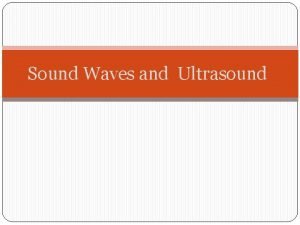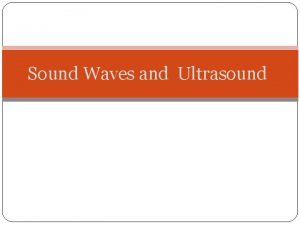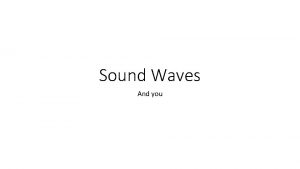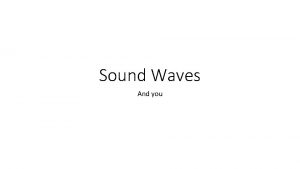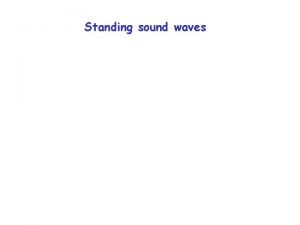17 4 Sound and Hearing Sound waves are









- Slides: 9

17. 4 Sound and Hearing • Sound waves are longitudinal waves that travel through a medium. • Many behaviors of sound can be explained by using a few properties: – Speed – Intensity – Loudness – Frequency – Pitch

Speed • In dry air at 20 o. C, the speed of sound is 342 m/s. • More than 10 times faster than your speed in a car on a highway. • Fig 14 on p. 514 in text shows speed of sound in different media. • Travels fastest in solids, slower in liquids, and slowest in gases. Why?

Intensity and loudness • Intensity is the rate at which a wave’s energy flows through a given area. • Intensity depends on amplitude and distance from source. • Measured in decibels (d. B) – unit that compares intensities of different sounds. Based on powers of 10.

Intensity and loudness • Loudness is a physical response to the intensity of sound, modified by physical factors. • Depends on intensity, health of ears, and how your brain interprets the information in sound waves.

Frequency and Pitch • Frequency depends on how fast the source is vibrating. The faster the vibration, the higher the frequency. • Pitch is the frequency of a sound as you perceive it. • Pitch depends on frequency, but it also depends on other factors (like age or health of ears).

Ultrasound • Used in a variety of applications like sonar and ultrasound imaging. • Sonar is a technique using wave reflection to determine an object’s distance under water. • Stands for sound navigation and ranging. • Distance calculated using the speed of sound under water and the time that the sound wave takes to reach the object and the echo to return.

The doppler effect • A change in sound frequency caused by motion of the source, listener, or both. • As source of sound approaches, observer hears a higher frequency. As it moves away, a lower frequency.

Hearing and the Ear • Outer ear – gathers and focuses the sound. • Middle ear – receives and amplifies the vibrations. • Inner ear – uses nerve endings to sense vibrations and send signals to the brain.

How do we Reproduce sound? • Recorded by converting sound waves into electronic signals. (Like in our ears) • Reproduced by converting electrical signals back into sound waves.
 Antigentest åre
Antigentest åre What is a rainbow
What is a rainbow Sound waves are mechanical waves true or false
Sound waves are mechanical waves true or false The wave chapter 13
The wave chapter 13 Whats a reflected sound wave
Whats a reflected sound wave Compare and contrast p waves and s waves using venn diagram
Compare and contrast p waves and s waves using venn diagram Example of mechanical wave
Example of mechanical wave Example mechanical waves
Example mechanical waves What is a semiconductor used for
What is a semiconductor used for Mechanical waves and electromagnetic waves similarities
Mechanical waves and electromagnetic waves similarities











